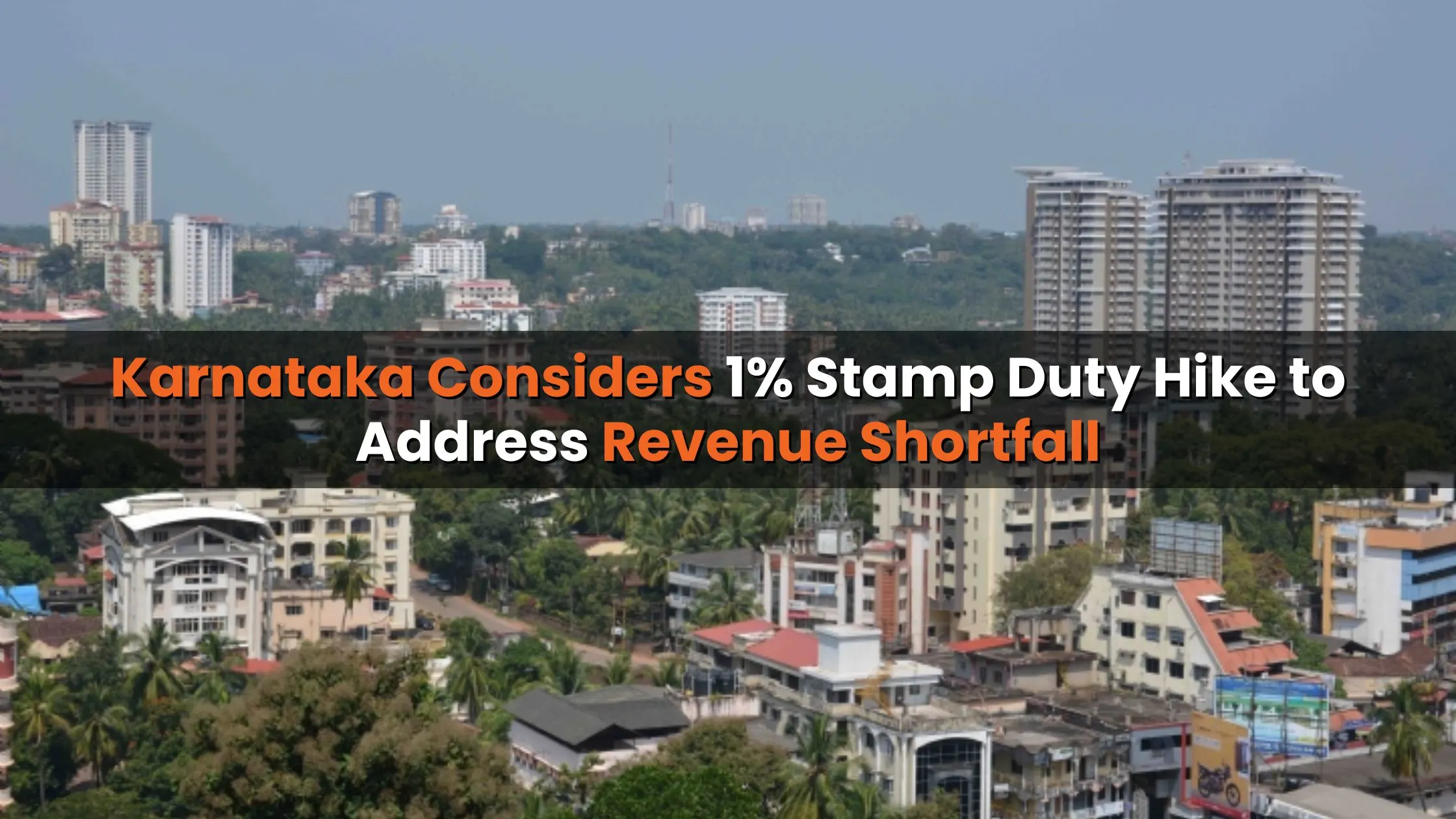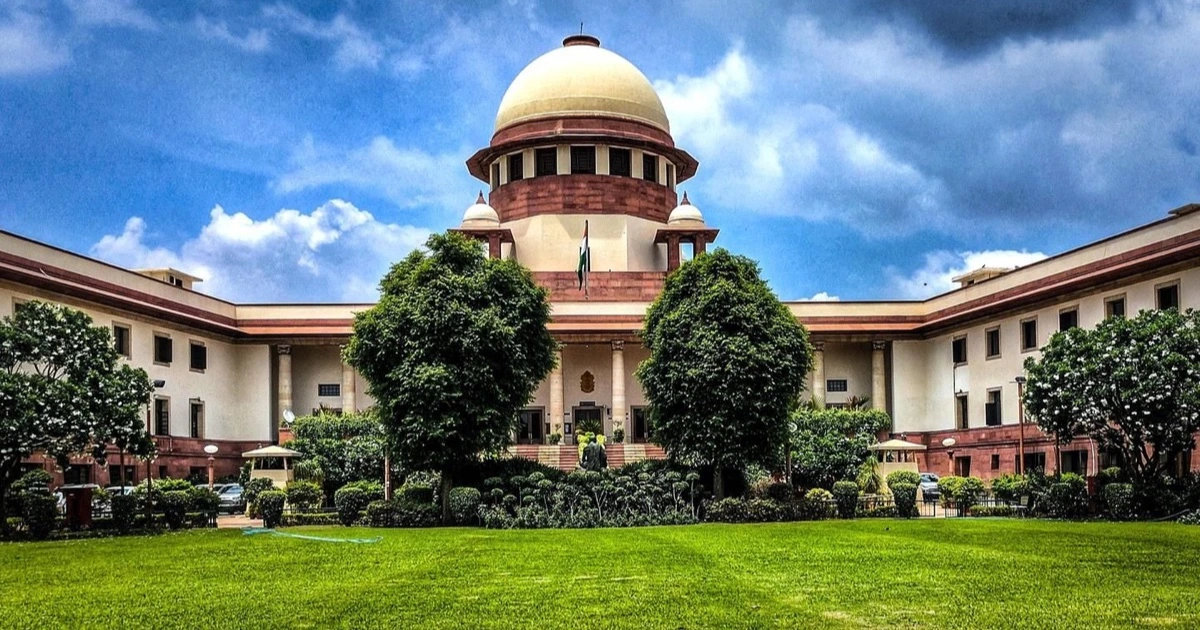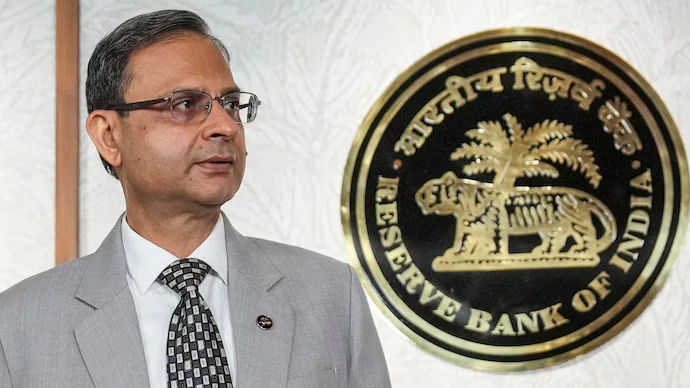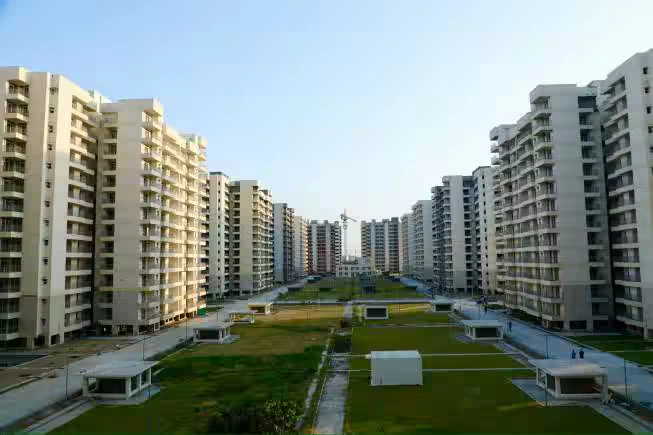Table of Content
The Karnataka government is considering a 1% increase in stamp duty as a measure to counteract a significant revenue shortfall in property registration collections. If implemented, this hike would raise the total property registration cost for buyers from the current 6.6% to 7.6%. The decision comes as the state grapples with falling revenues despite increasing targets for the fiscal year.
Current Property Registration Costs in Karnataka
Homebuyers in Karnataka currently pay several charges when registering properties:
- Stamp Duty: 5% of the property’s guide value, which is the minimum price set by the government.
- Registration Charges: 1%.
- Cess: 0.5%.
- Surcharge: 0.1%.
These components combine to make up 6.6% of a property’s value, but with the proposed hike, this percentage could rise to 7.6%, significantly affecting buyers’ costs.
Also Read: India’s Affordable Housing Leaders: Ahmedabad, Pune, Kolkata; Mumbai Sees Growth
Reasons Behind the Revenue Shortfall
1. Missed Revenue Targets
The state’s stamps and registration department has consistently fallen short of its revenue goals:
- In FY2024–25, the target was initially set at ₹26,000 crore but was later revised to ₹24,000 crore. However, only ₹22,500 crore was achieved.
- For FY2025–26, the target has been raised to ₹28,000 crore. Despite this ambitious goal, only ₹4,556 crore was collected in the first quarter, resulting in a 35% shortfall.
2. Real Estate Market Slowdown
A slowdown in the real estate sector is contributing to reduced transactions, which directly impacts property registration revenue. Buyers and investors may be holding back due to market corrections, high property prices, or economic uncertainties.
Details of the Proposed Stamp Duty Increase
To bridge the revenue gap, the government is weighing an increase in stamp duty from 5% to 6%, effectively raising the overall property registration cost.
- Impact on Buyers: This increase would mean a higher financial burden, particularly for middle-income and first-time homebuyers.
- Revenue Generation: The additional revenue from this hike could help the state meet its financial targets.
However, the move carries risks, including further dampening the already sluggish real estate market.
Implications of the Stamp Duty Hike
For Homebuyers
An increase in stamp duty would make property purchases more expensive. This could deter potential buyers, especially in the affordable housing segment, where even small cost increases can significantly impact purchasing decisions.
For the Real Estate Market
Higher transaction costs could slow down the market, leading to reduced demand. Developers, already navigating tight margins, may face delays in projects if buyers delay their purchases.
For Revenue Growth
While the government may see a short-term revenue boost from the increased stamp duty, long-term revenue could suffer if transaction volumes continue to decline.
Government’s Approach to the Revenue Shortfall
The Chief Minister has tasked the finance, stamps, and registration departments with identifying actionable strategies to address the revenue deficit. The proposed hike is just one part of a broader plan to stabilize collections while keeping the real estate market dynamic.
Expert Opinions and Stakeholder Reactions
- Industry Experts: Warn that the increase might have a cooling effect on buyer sentiment, potentially leading to a prolonged slowdown in the market.
- Developers: Highlight concerns about affordability but are cautiously optimistic about a rebound during the festive season when property transactions typically increase.
Also Read: Housing Sales and Supply Dip in Mumbai, Thane, Navi Mumbai, and Pune in Q2 2025
A Comparative Perspective
Karnataka’s current property registration charges are competitive compared to other states. However, the proposed hike could shift this balance. States with higher property registration costs often see a slowdown in transactions, particularly in price-sensitive segments of the market.
Conclusion
The proposed 1% increase in stamp duty reflects Karnataka’s efforts to address its fiscal challenges. While the move may provide a temporary revenue boost, its long-term impact on affordability and the real estate market warrants careful consideration.
For policymakers, maintaining a balance between fiscal responsibility and market health will be critical. Homebuyers and developers alike will need to adapt to these potential changes, ensuring that the state’s property market remains robust and attractive in the years to come.
Follow AquireAcers Whatsapp Channel to Stay Updated With The Latest Real Estate News










Ans 1. Currently, the stamp duty is 5% of the property’s guide value. When combined with registration charges (1%), cess (0.5%), and surcharge (0.1%), the total property registration cost is 6.6%.
Ans 2. The Karnataka government is considering increasing the stamp duty from 5% to 6%, raising the overall property registration cost from 6.6% to 7.6%.
Ans 3. The state is facing a revenue shortfall in property registration collections, having missed targets in recent fiscal years. The proposed hike aims to address this deficit and meet the revised revenue goals for FY2025–26.
Ans 4. In FY2024–25, the state set a target of ₹26,000 crore but achieved only ₹22,500 crore. For FY2025–26, the target is ₹28,000 crore, but the state collected just ₹4,556 crore in the first quarter, reflecting a 35% shortfall
Ans 5. An increase in stamp duty would raise the overall cost of purchasing a property, placing a higher financial burden on buyers, particularly middle-income and first-time homebuyers.
Ans 6. Higher transaction costs may dampen buyer sentiment, reduce demand, and slow down property transactions. Developers might face challenges in maintaining project momentum due to hesitant buyers.
Ans 7. The hike could provide a short-term boost to revenue. However, if higher costs deter transactions, the long-term revenue benefits may be limited.
Ans 8. Karnataka’s current charges are competitive, but the proposed hike could shift this balance, potentially affecting its attractiveness compared to states with lower registration costs.